It was the 1960s, and Los Angeles was buzzing with the sound of a music revolution. The city wasn’t just home to The Beach Boys, The Byrds, or Phil Spector’s “Wall of Sound” among others; it was also the epicentre of a behind-the-scenes phenomenon shaping the soundtrack of an entire generation. Enter The Wrecking Crew, a loose collective of session musicians whose unparalleled versatility and precision made them the first call for nearly every major hit recorded on the West Coast. Known informally as “the Clique” or “the First Call Gang,” they were the unsung heroes lurking in the shadows of stardom. While audiences swooned over iconic bands, it was often these players who laid down the music—silently crafting timeless hits without so much as a credit on the album sleeves.
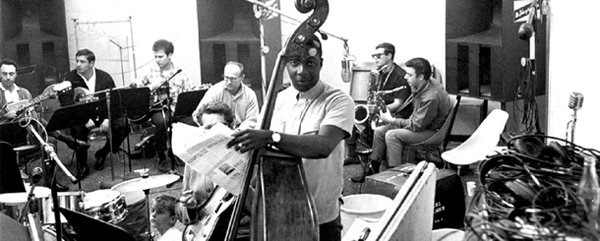
Recording with The Wrecking Crew was no ordinary affair. Unlike today’s layered, overdub-heavy productions, the Crew recorded live, capturing a full band performance in a single take. With top producers like Phil Spector, Brian Wilson, and Lou Adler in the control room, the pressure was high. The musicians were given rough sketches of songs—often no more than chord progressions or vocal demos—and expected to create arrangements on the spot.
Time was money in LA’s studios, so these players worked at lightning speed, improvising parts that would define the tracks we know today. A hallmark of their process was precision: drummers like Hal Blaine locked into a metronome-like groove, while bassists like Carol Kaye anchored the rhythm section with melodies that were punchy, memorable, and utterly unique. And then there was the sheer chemistry. Many members had played together for years, which made even complex arrangements sound organic and effortless.

Phil Spector, famous for his “Wall of Sound” technique, would pack the studio with musicians—sometimes up to 20 at once—layering instruments like an orchestra. Meanwhile, Brian Wilson of The Beach Boys turned sessions into experimental workshops, pushing the Crew to recreate the sonic landscapes in his head. The result? Tracks that weren’t just pop songs but miniature symphonies.
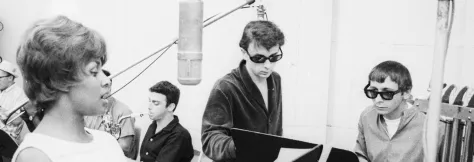
What made The Wrecking Crew such a force was their chameleonic ability to adapt to any genre. Individually, they were jazz, rock, country, or classical musicians; together, they were shapeshifters who could morph into anything a producer dreamed up. Many had formal training, but just as many had cut their teeth in dive bars or toured with small-time acts before landing in the studio scene.
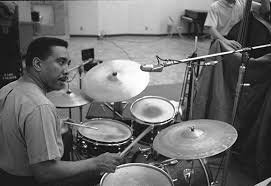
Carol Kaye, for example, started as a jazz guitarist before switching to bass and reimagining how it could be played in pop music. Drummer Hal Blaine’s background in swing music made him an adaptable rhythmic powerhouse. Others, like guitarist Tommy Tedesco, were renowned for their ability to sight-read complex sheet music with ease. They brought technical mastery, street-smart instinct, and a willingness to experiment—a blend that made every session feel like a creative laboratory.
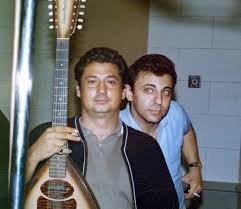
The Wrecking Crew’s ranks were massive, but a few names stand out. Hal Blaine, often called the most recorded drummer in history, was the rhythmic backbone of countless hits. His creativity was legendary—he famously played a pair of upside-down water jugs on The Beach Boys’ “Caroline, No.”
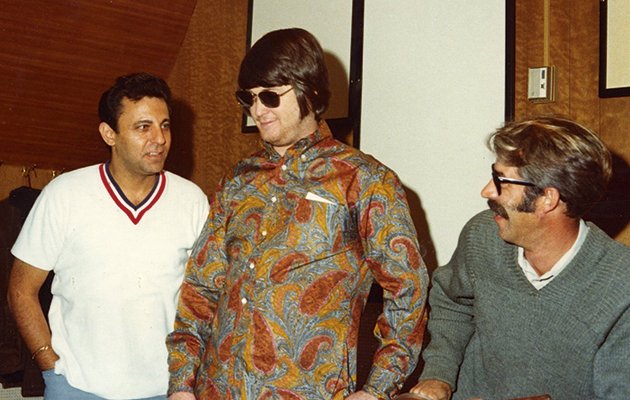
Carol Kaye broke barriers as a female bassist in a male-dominated industry. She played on hits like “Good Vibrations” and the “Mission: Impossible” theme, earning a reputation as one of the most innovative bassists in pop history.
Guitarists like Glen Campbell, who later became a country star in his own right, and Tommy Tedesco, known as the ultimate session player, added colour to tracks with their versatile styles. Meanwhile, pianist Leon Russell and saxophonist Plas Johnson were instrumental in creating the lush textures of the era.
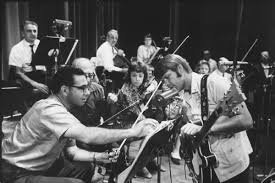
The Wrecking Crew didn’t just play on hits—they made them unforgettable. Phil Spector’s “Be My Baby” by The Ronettes wouldn’t have been the same without Blaine’s thunderous opening drumbeat. That simple boom-boom-boom BANG became one of the most recognisable intros in pop history.
With The Beach Boys, the Crew worked on Pet Sounds, considered one of the greatest albums of all time. Brian Wilson demanded perfection, sometimes running through dozens of takes for a single bassline. The session for “Good Vibrations” was particularly grueling, stretching across six months and several studios.
Then there’s “Strangers in the Night” by Frank Sinatra, where the Crew brought a jazz-like sophistication to a crooner classic. They also played on “California Dreamin’” by The Mamas & The Papas, where their delicate guitar picking and rich harmonies captured the bittersweet nostalgia of the ’60s.
As the 1970s unfolded, the reign of The Wrecking Crew gradually waned with the rise of self-contained bands and changing music industry dynamics. Artists began taking creative control, playing their own instruments, and embracing raw, unpolished sounds. Yet, the Crew’s legacy endured, shaping the sound of countless classics. Their unmatched versatility and ability to elevate any track left an indelible mark on popular music, cementing their status as unsung heroes of the golden age of recording.
Here’s a short list of The Wrecking Crew’s Greatest Hits: A Playlist of Legends, iconic tracks they played on:
1. “Be My Baby” – The Ronettes
2. “Good Vibrations” – The Beach Boys
3. “California Dreamin’” – The Mamas & The Papas
4. “Strangers in the Night” – Frank Sinatra
5. “Mrs. Robinson” – Simon & Garfunkel
6. “River Deep – Mountain High” – Ike & Tina Turner
7. “These Boots Are Made for Walkin’” – Nancy Sinatra
8. “You’ve Lost That Lovin’ Feelin’” – The Righteous Brothers
9. “Aquarius/Let the Sunshine In” – The 5th Dimension
10. “Monday, Monday” – The Mamas & The Papas
11. “MacArthur Park” – Richard Harris
12. “A Taste of Honey” – Herb Alpert & The Tijuana Brass
13. “The Pink Panther Theme” – Henry Mancini
14. “This Diamond Ring” – Gary Lewis & The Playboys
15. “I Got You Babe” – Sonny & Cher
16. “Mr. Tambourine Man” – The Byrds
17. “Windy” – The Association
18. “The Beat Goes On” – Sonny & Cher
19. “Close to You” – The Carpenters
20. “Up, Up and Away” – The 5th Dimension
EXTRA: A MUST SEE – THE WRECKING CREW! (2008)
Denny Tedesco’s documentary is a heartfelt tribute to the unsung session musicians who shaped the sound of the ‘60s and ‘70s. Packed with rare footage, interviews, and anecdotes, it captures the Crew’s brilliance and camaraderie while spotlighting their immense, often-overlooked influence on music history. A must-watch for any music lover!

